Kalimba, mbira, or thumb piano is a fun little instrument with growing popularity. The reason why people love it is that it’s easy to play, and you won’t need to know much about music theory to learn it. While you will still need to practice playing, it is one of the easiest instruments you could learn.
Before You Start
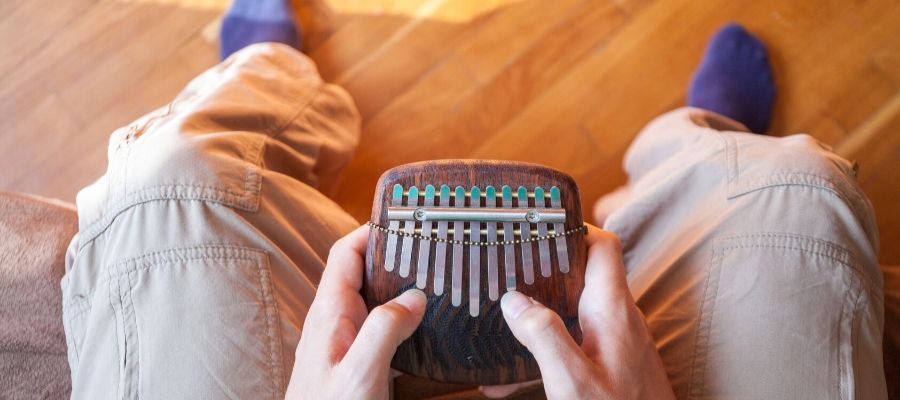
To learn how to play this instrument, you will need to buy it first. There are so many types of thumb piano available on the market, and you can choose the number of tines, material, shape, and almost anything else.
Some variations of this instrument are simpler and more beginner-friendly. So if you never had experience with music or instruments before, getting a small eight-key kalimba might be a perfect idea.
But fear not, even if you are an absolute beginner, you can still get a common 17-key kalimba, and you’ll find it easy to use and learn. So, don’t limit yourself and start practicing.
Anatomy Of Kalimba

Once you get your hands on a new instrument, you will need to know your way around it. Each kalimba has a board or a resonator. The ones with the resonator are louder and can create better tones. Furthermore, on kalimba, there will be a number of metal pins or tines that you will pluck with your finger.
Each kalimba is tuned to a specific key, and you will get an instrument tuned in that way. For example, the C major kalimba has all notes from the C major scale, and some offer a couple of octaves.
It is also possible to find a thumb piano with internal pickup, which will allow you to plug it into a speaker or an amplifier so you can hear better what you’re playing.
Tuning The Instrument

As with other instruments you will need to ensure that it’s always in tune so you can play it properly. If you bought a new one, or if your kalimba has been sitting around for a while, there is a chance that it will go out of tune. But fear not, the process of tuning kalimba is simple. You will need a chromatic tuner and a tuning hammer.
If you don’t have a tuner already, you can download one for your smartphone, which will allow you to easily know which notes you’re playing.
Once your tuner is ready, just play the note and lightly tap the tine either from the top or bottom to move the tine into the right position. Tapping from the top will cause it to get lower while tapping from the bottom will do the opposite.
Kalimba can go months without re-tuning, and you should always ensure that everything is set-up before you start playing or practicing.
Most kalimbas come with a tuning chart, so you won’t have to worry about which notes are the right ones. You can also find any info you’re missing online.
How To Hold Kalimba

Once your tuning is set-up, you can start practicing. To hold kalimba properly, you will take it in both hands and hold it with the inner sides of your palms.
Thumbs of both hands will go over and you will use them to pluck tines. In the beginning, you can use the rest of your fingers to improve the grip on the instrument.
However, there are some techniques that require you to use other fingers as well. But if you are a beginner, your thumbs will do the work and they are enough for you to start practicing and learning more about this exciting African instrument.
If your instrument has two holes on the back, do not cover them with your hands or it will not sound right. The same applies to the middle hole. There are some techniques you can use later, but for beginners focus on playing the right notes and plucking properly before you experiment with other things.
How To Correctly Pluck Tines
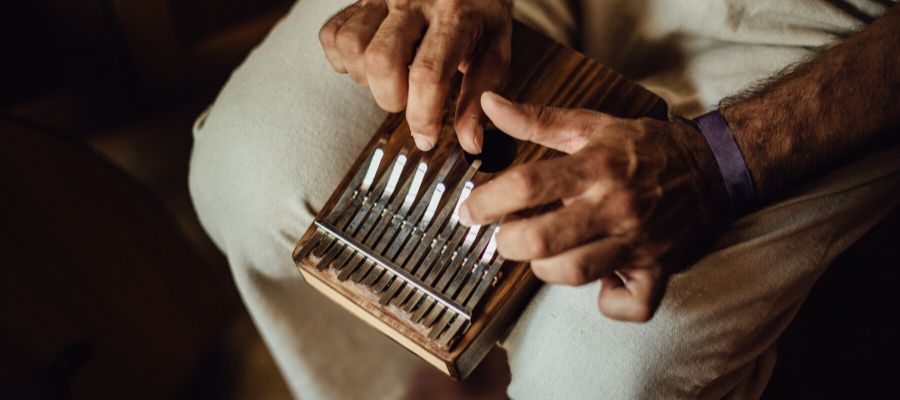
To play kalimba, you will need to know how to pluck tines. For beginners, you will use your thumbs, and alternate between your left and the right one. It is a good idea to memorize which tine represents which note in the scale.
Usually, the longest one is the root note, but this is not always the case, so check if any charts or guides came along with your instrument.
Notes on the kalimba alternate from left to right. The second note from the root is located on one side, and the third one is on the other. This is not the case with many other instruments, and on a regular piano, notes go from left to right.
You will progress through scale by alternating from left to right, and you can use both thumbs to navigate your way through the scale. To pluck a note, you will use either your fingertip or thumbnail.
Gently push the tine downwards and release to hear the note. Take your time, it does require a bit of practice, but you won’t need to spend hours like with some other instruments.
Practice a bit flicking the tine with your nail until it resonates and creates a perfect sound.
How To Play Chords

If you take a look at two adjacent tines, there is a three-note difference between the two. Since they are one third apart from each other, this means that they can create a chord or diad.
Plucking two notes at the same time with your thumb will create a chord. You can combine any two adjacent notes for different chords, and you can experiment with them as much as you like.
Needless to say, you might need a bit of practice to hit them both at the same time and make them sound equal, but you will get there.
Take Your Time

Since playing the instrument requires you to use your nails, it’s not always easy. You probably never experienced this type of pressure on your fingertips and nails, and it can get a bit painful at the beginning.
Over time, your fingernails will get used to this and you will be able to practice as much as you like without any problems.
Some players use a pick to pluck tines, and you also get protectors for your thumbs. This way, you will be able to cover your fingertips and avoid the painful part of the learning.
Experiment

By combining individual notes and chords, you can create music on your own. This is a lot easier than you would expect. Since each kalimba is tuned to a specific key, let’s say C major, you won’t have any note that’s out of key.
Furthermore, it is perfect for beginners since there are almost no “wrong notes.” You can have as much fun as you like without leaving the scale and playing out of key.
Practice Different Techniques

Playing individual notes is fun, but you will soon long for something more. Two or even three adjacent tines will create a chord. But how exactly should you play this? On the harp, there is a technique called a glissando, to achieve this, a person will run their fingers across two or three adjacent notes.
On the kalimba, you will play a single note, and run your fingers across the adjacent ones. To do this, simply drag your thumb across the neighboring notes after plucking the first one.
Naturally, it will be a lot easier if you have a longer thumbnail, but even if you don’t you can find thumb picks that are designed to help you achieve this.
You can also add more fingers to your technique, and try something different like plucking the note upwards with your index finger.
Another exciting thing kalimba players love is the percussive quality of the thumb piano. Since your other fingers are free, you can use them to add a bit of rhythm to your playstyle.
Moreover, I previously mentioned the hole at the center of the instrument, and covering it will change the resonating qualities if kalimba. However, you can use this to your advantage, and covering and uncovering the hole will create an effect that’s similar to a wah pedal.
Similarly, two holes on the back can create a vibrato effect using the same technique. So take your time and experiment to see all the different notes you can create.
How To Find Songs You Want To Play
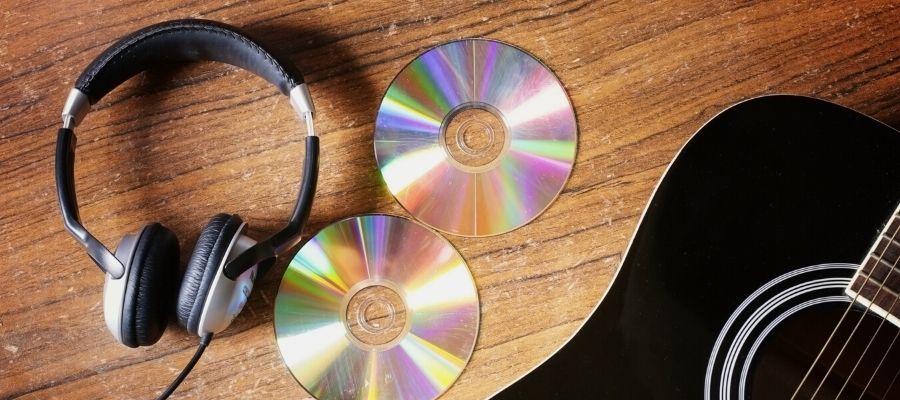
In essence, you can play any song you like. However, to play it accurately you might need to retune your instrument. Since each kalimba has a single scale and key, you won’t be able to play songs in different keys unless you change them a bit.
It is a great option to start your learning experience by practicing songs that are already the same key as your kalimba.
For example, if you have a C major instrument, just google songs that are in C major (or A minor). In music theory, C major and A minor are relative keys since both have the same notes. The only thing that’s different is the root note.
This way you can experiment with these two signatures before you start arranging other songs for your key.
How To Read Tabs

As with any other instrument you can find sheet music. Since the very nature of kalimba is to have fun without tons of music theory, standard sheet music might be a problem. Fortunately, you can find tabs for thumb piano as well.
These tabs are also known as ktabs, and they show you exactly which tines you need to pluck to get the desired note.
Similarly to guitar tabs, they are a visual representation of the instrument, and you don’t need to know music theory to read them. As you can imagine, ktabs are rather popular since anyone can both read and write them.
To read tabs, all you have to do is follow the notes that are on the bottom and work your way upwards. Similarly to the game Guitar Hero, the next note you need to play is above the previous one. Another thing that can be handy is that each note has a visual representation of its length.
This means that you will see quarter notes, half notes, and so on. To avoid any confusion, you will see numbers that represent each bar, and you will simply start from the bottom or number one and work your way up.
To make everything easier, search for kalimba tabs according to the type of instrument you own. If you have 17-note kalimba, simply search for “17-note kalimba tabs”
Use Your Ears

Training your ears can be difficult, but with enough practice, you’ll make it. Listen to what you’re playing and try to find the notes you need. This way, you can rely less on tabs, and play music by ear.
Training ears is not an easy process, but it’s achievable with enough practice. One of the things you can try is to listen to the song you like, and then try to play it on the kalimba. Don’t feel bad if you’re not able to play it instantly.
However, with enough practice, you’ll be able to learn it and you will memorize how each tine sounds. This will allow you to easily find the note you’re looking for.
Start Slow And Build Your Way Up
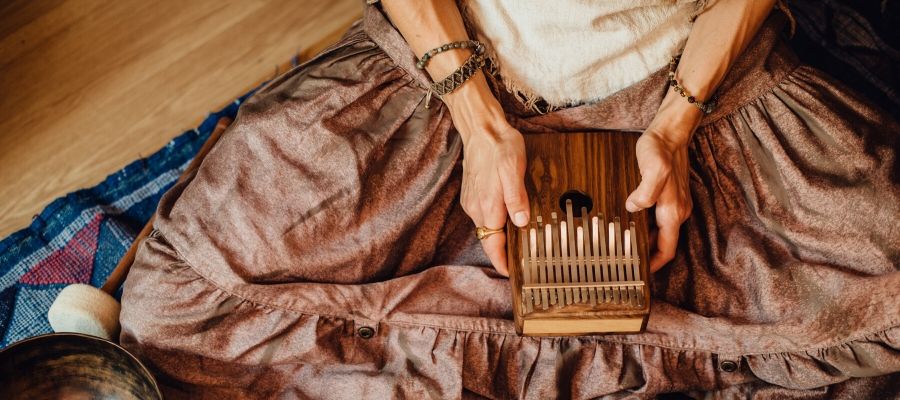
One of the best pieces of advice when it comes to music is to take your time. It is much more important to learn how to play properly than fast. Speed will come with time and practice, and if you learn correctly, your knowledge will only improve.
Many agree that if you learn slowly you will forget slow, and healthy learning is more important than rushing over lessons. So take your time and enjoy the journey of learning new instruments.
Music Theory

Music theory can be scary. There’s no doubt about it. But learning a bit can significantly help you along the way. This doesn’t mean that you will have to go to a music academy and learn everything there is to know about theory.
However, learning basics can improve the learning speed and help you understand better what you’re doing.
As I previously mentioned some ktabs have note lengths marked on each tine you need to play, and it is a good idea to know what it means. Furthermore, learning about music theory can’t hurt, but it can help you a lot along the way.
By understanding how everything works, you can adjust your instrument to your wishes and desires. You can also change the key of your kalimba, and experiment with different types of tunings once you get bored of that single key.
This can also save you some money because you won’t need to buy several instruments for each key you might need. Investing in your knowledge is an excellent way to improve your playing skills and understanding of the music in general.
Practice

There is no other way around it. You will need to practice if you want to be good at it. Even though kalimba is one of the easiest instruments you can learn, you will still need to practice it if you are looking to enjoy and improve.
Whether you find ktabs, learn by ear, or have a book that will help you, you will need dedication and practice to become good at it. Start with simple songs like “happy birthday” or “twinkle twinkle.” After that, you can proceed to songs that are more complex and require additional techniques and playstyles.
The important thing is to have fun and enjoy playing. You should dictate your own tempo and learn songs and techniques that you enjoy. In time, and with enough practice, you will learn how to play kalimba like a pro.
Conclusion
Playing the kalimba is easy, but you will still need to practice before you’re good at it. The best way to learn is to explore and listen to music. While it is not necessary, you can always learn more about music theory.
It will help you understand better, and know why you should play in a specific way. There are so many great channels on YouTube, and there are tabs which will show you exactly which notes to play.
In the end, it all comes to practice, and if you invest time, you will become a master of kalimba.
If you found this article useful you may want to save this pin below to your Kalimba board
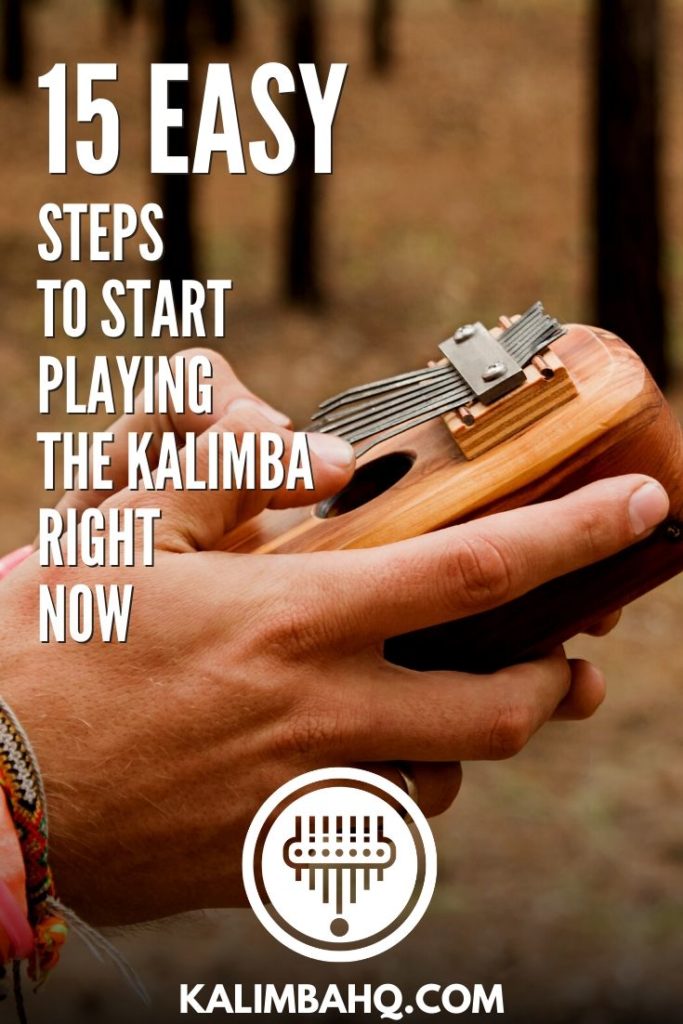
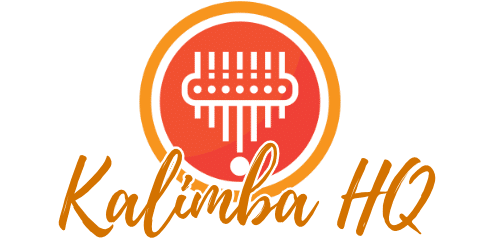

Thank you for a wonderful article. It’s enjoyable and inspiring.
They are very helpful advices for a beginner like me! Thank you
It started as a hobby but it’s now an obsession qwq